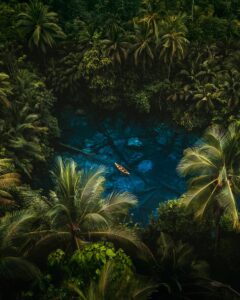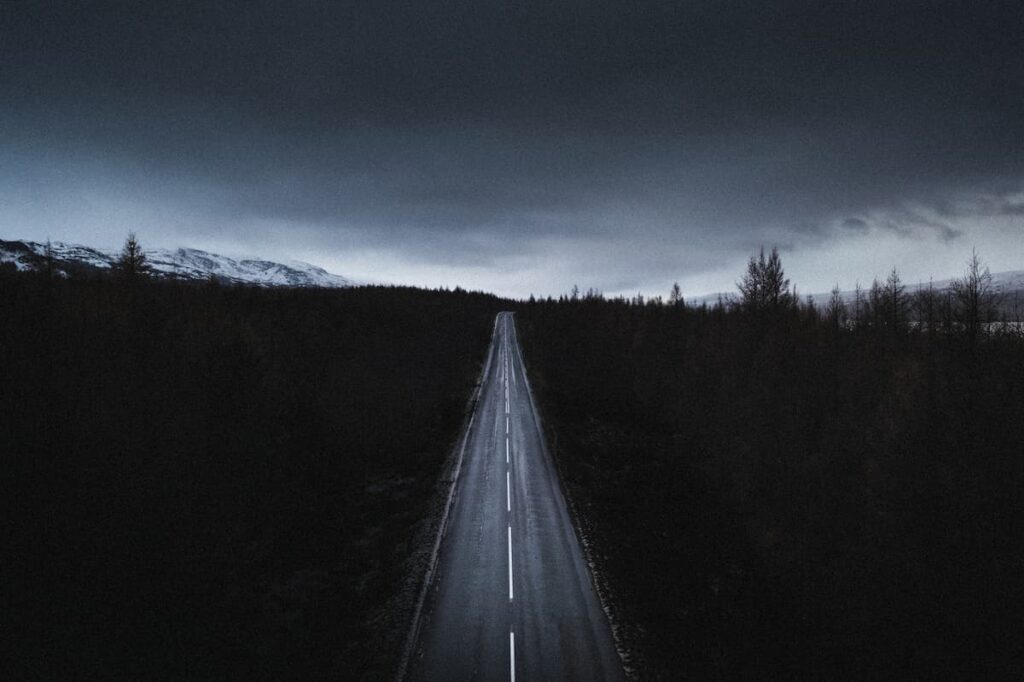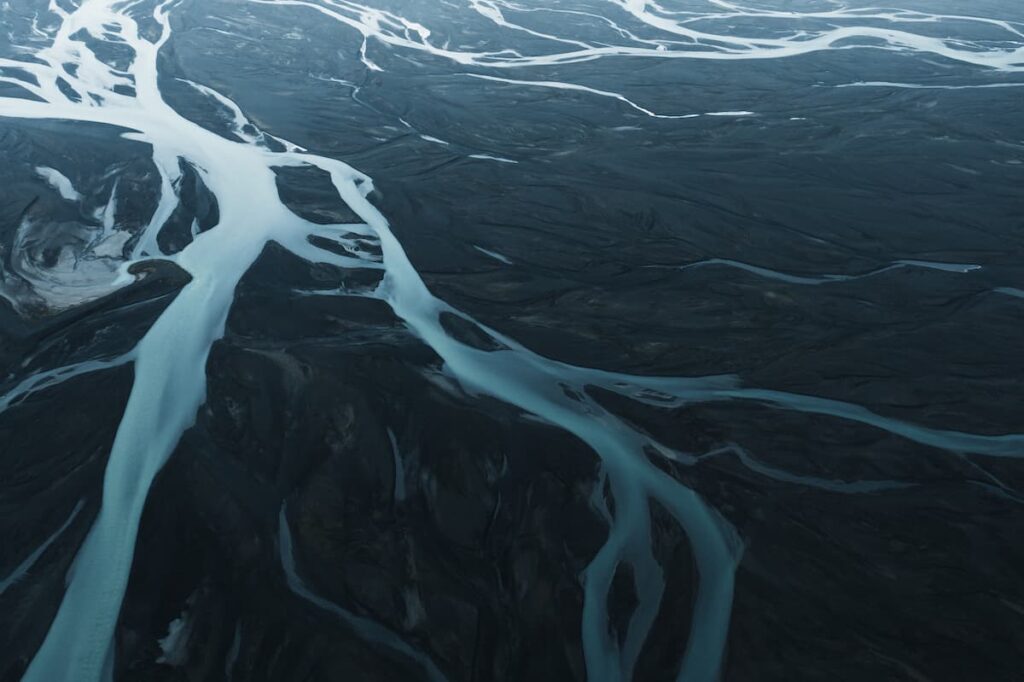
Tom Fähndrich (@tofenpics): Best of the Week 47 at #nomadict
Tom shares the journey behind his winning photography, from a passion for exploration and remote places to field lessons, composition choices, and color grading.
Ritchie is a photographer from the Shetland Isles in the northernmost part of Scotland. He has developed a style that emphasizes uniformity, minimalism, and a sense of peace while highlighting the drama of the landscape. In this article, we learn more about his homeland as well as his editing steps.
Be it biking, surfing, hiking, or even cliff jumping, I usually had a camera with me to document the adventurous things that my friends and I were doing. Growing up in the Shetland Isles – a subarctic archipelago in Scotland that formerly belonged to Scandinavia – my childhood was pretty free-range. Being able to explore so freely at such a young age with parents who appreciated the outdoors, has fuelled a very large fire within. The immersion in the landscape and consciousness of nature has benefited me greatly and over time, I became drawn to the raw and unrefined beauty of these remote isles and islets that I have the fortune of calling home. I wanted to capture moments and places that others typically wouldn’t see that I so often experienced myself.
Meeting my current girlfriend and soon-to-be wife, accelerated my photography skills and tripled my outings. She is just as keen as I am to get out in any kind of weather and explore with a camera in hand. Seeing someone else discover my home with such enthusiasm reinstated the appreciation I have for these Isles.
Shetland has a very diverse geological composition and there is a great contrast from one end to the other. The Northern areas of these isles are by far rooted deepest in my being; I feel there it is much more dramatic with its towering blackened cliffs and sea stacks. Remnants of its volcanic past. They are especially beautiful in the most terrible of storms.
The weather here is wild and changes every 5 seconds; we truly get 4 seasons in a day at times. Daylight during winter is very limited so time is quite valuable when it comes to preparing to capture a moment. Oftentimes I have to set off driving in the dark to the location, to then hike out to where I plan to photograph. To have the perfect conditions for the mood I am aiming for, it really helps to monitor the weather.
One image from a previous winter in the North of Shetland represents for me how long it can take to get the image you envisioned. The location is one I’m quite familiar with but didn’t manage to photograph it in my desired conditions until I shot this image – about three years from the day I had started my pursuit of this image. It took the best part of 3 years to finally achieve this. It required a particular direction/amount of swell and wind combined so I wasn’t exactly going to be able to try this every day.
Another image taken in the Shetland that I’m particularly proud of is an image of a puffin that I shot a few years ago. It happens to be the first image I ever printed for a business. It currently hangs on a wall in the center of a local restaurant.
The day I shot this I hadn’t remembered to take a long lens and only realized once I had driven for hours and hopped over two islands via ferry. It was one of those times when you just have to make the most of the gear you have with you. After unsuccessfully taking photos of the puffins coming and going from their burrows to fish out at sea, I decided to stop for some lunch along the cliffside. There were some burrows nearby but there weren’t any signs of movement so I set my camera down and lay on my stomach, watching the tiny birds zoom around in the distance. After a while, by sheer chance, this very curious little thing landed within a meter or two of me and just stood there watching me intently. I managed to gently pick my camera up and take some photos. I’m not sure how much time passed but I was just laying there looking into its eyes for some time afterward. It was a really special moment.
I approached the editing of the puffin image according to my style. Although most of my images are landscape shots, I could still really apply my usual preferences of how to edit an image to this puffin shot. For the most part, I would say I aim to achieve uniformity and a sense of minimalism in my images. I try to limit distraction from the subject and create calm whilst displaying the drama of a landscape. Perhaps it’s uncommon to feel at peace during a storm but I find the roughest weather to be quite calming and I try to convey that at times.
When it comes to the use of colour, I have to work somewhat harder than most to achieve a consistent style in my work because I actually happen to be a bit colour blind. I like to keep my images simple with regard to colour. Not too much going on but just enough to help to evoke feelings in the viewer – often this will be a sense of how cold it is.
I more often than not tend to lean towards a colder aesthetic. Not only because it is actually pretty cold here a lot of the time, but also as a result of what I find I am drawn to in the landscape. In any given image, I aim to have a dominant colour as a base.

Here and there if the subject contains a contrasting colour such as yellow or orange I will use that to make the image pop and draw attention. For example, a person with a yellow raincoat in a cold blue landscape. I am however constantly trying to discover new ways of seeing the same things and to learn as much as I can through the way others view colour.
For this puffin image, but in general, for most of my images, these are the steps I followed:
1) Start off by healing/content aware removing any obvious distractions (imperfections).
2) Lower the temperature.
3) Tweak the exposure depending on how much light there is (I lowered it).
4) Increase contrast highlights and shadows.
5) Reduce saturation slightly. Magenta to -100 because I really don’t like how it looks in a landscape photo and feel it doesn’t add to my style.
6) Blue luminance up and tweak the rest to suit the main focal point.
7) Set the global hue to around 195 with the saturation below 10 to evenly balance the blue tones and overall temperature.
8) Partially sharpen the subject.
9) Profile correction and alter the vertical/horizontal perspectives to suit.
10) Add Grain (lately, I’ve been adding quite a lot because I enjoy the look and texture it achieves).
11) Select the subject and balance exposure/highlights relative to where you want the image to pop/to have detail.
12) Add brush adjustments to areas where there is too much light in the background.
13) Radial gradient over the eye as it was rather underexposed.
14) Heal/Content aware remove bits of dirt/sand from the face to clean up the image.
15) Point curve adjustments to balance the histogram some more.
16) Fade blacks for this image to give it a softer outline.
17) Edit in Photoshop to fill the white edges created during altering the horizontal and vertical perspectives.
18) Export.
Move RIGHT or LEFT to compare
There were of course little brush strokes and healing brushes I tweaked/added between these steps but this is a good overview of how I approach an image like this.
Ultimately, it doesn’t matter exactly how you edit an image or what style you may have. Different styles yield equally impactful images. The most important way to get an image that intrigues the viewer and really captures the essence of a landscape, according to me – is to fully immerse yourself in the situation, whatever you shoot. In my case that is mostly landscapes.

Some other strategies I believe are effective in achieving a great landscape photograph are:
1) Spend enough time in the environment you wish to capture. Observing and understanding how nature interacts with/affects the landscape enhances the process of creating a convincing image.
2) Post-processing can really play a large part in the way people feel when they view an image. It is an opportunity to imprint a larger part of yourself onto your art. Be conscious of what your image says, what questions it poses (if any), and especially the emotion you wish to convey.
3) Clearly layering the foreground, middle ground, and background
4) Having lines or a direction of light that leads the viewer’s eye through the image to and from the subject.
In addition, for me, it’s also very important to first and foremost create for myself. I believe this also influences the impact and result of your images – we should never lose connection with our drive and passion. I’ve learned this over the years and I suppose that everyone trying to pursue a career in photography will perhaps arrive at that realization eventually.
Other lessons that I’ve learned and subsequently helped me improve a lot in my work as well as my well-being, are to, first of all, not compare myself so much to others but instead aim to draw inspiration from what they create. Secondly, to continue questioning everything and always aiming to expand your knowledge of a subject. There will always be someone who knows something you don’t or does something differently to achieve the same result. Finally, to set smaller and more achievable goals that all support a larger singular goal. This has been key in fulfilling intentions without undue stress, fluctuations in emotion or motivation, and even the want to give up as a result of disappointment.
My most significant personal project/goal so far has been writing and creating a photo storybook that showcases the Shetland Islands in a totally unique way. Although it hasn’t been finished or published yet, I am almost there and the process has opened my eyes to how much work and effort goes into shooting for a book let alone writing one. I have to be ready to capitalize on every opportunity that comes my way throughout the year if I want to fulfill the image list in the conditions I’ve set out to shoot in. It has motivated me to do more published work in the future. The sole purpose of this project is to give reverence to my home and share my experiences with others.
It’s wonderful to keep creating for myself and having personal goals besides the work that I do for clients nowadays. A couple of years back I had never imagined my life would work out like this. However, one image of a Shetland landscape changed my route and directed me to something beautiful. The image didn’t only capture a perfectly moody day wandering the north coast of Shetland, it also represents a time in my life when I was feeling lost and at the same time consumed by photography – it was a creative outlet as much as it was an escape.
Back then I worked on a project with some wonderful people for an outdoor clothing brand who, had it not been for this image, would perhaps never have been drawn to my work. A few of them have since become good friends of mine too. I see this image as a pivotal moment in my life leading toward some wonderful experiences and friendships. It also then made me realize that there might be a chance I could one day, turn photography into a career. And when I look at where I am now and what I have accomplished over recent years, I can only say that I’m incredibly grateful.
In the future, I would like to strongly establish myself as a photographer. I see myself working with brands around the world as well as from home whilst at the same time highlighting climate issues and working on related projects where possible – especially in the northern hemisphere. I’m drawn to cold remote places and I know there are many more landscapes to be captured in the arctic and subarctic regions…

Tom shares the journey behind his winning photography, from a passion for exploration and remote places to field lessons, composition choices, and color grading.

Join us in the Faroe Islands for a unique photo tour, where you’ll elevate your creative skills with expert guidance from Ronald Soethje and Nomadict.

Join us in the Azores for a unique photo tour, where you’ll elevate your creative skills with expert guidance from Ronald Soethje, Bruno Ázera, and Nomadict.

In this article, Forest shares how years of chasing scale, silence, and raw landscapes shaped his approach to photography, from the deserts of Kazakhstan to the volcanic ridges of Iceland. He talks about how he uses light, texture, and vast negative space to create images that feel both intimate and overwhelming.

Simon shares the journey behind his photography, from early inspirations to field techniques, editing, and the story of the winning shot that shaped his path.

In this article, Miro shares how his love for cinematic music evolved into a deep passion for photography and how he uses light, color, and atmosphere to turn the streets of Prague into living film scenes.

In this article, Stefanie reveals how her background in physics sparked her passion for astrophotography and how she blends science with creativity to capture the beauty of the night sky. Readers will discover her approach to color, contrast, and editing, as well as her aurora photography workflow.

Spanish photographer Yhabril captures the profound connection between humans and the mountains that shaped him. Growing up in the Pyrenees, his work bridges outdoor sports, landscapes, and celestial scenes — often blending athletes, moonlight, and wilderness into striking visual stories.
